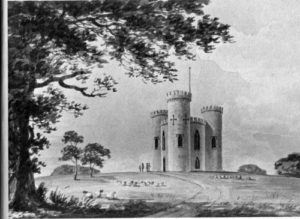
Chilcott’s New Guide to Bristol, Clifton and the Hotwells, etc, 1853
Built in 1766 near Henbury in Bristol, Blaise Castle is a folly built near the later constructed (1789) Blaise Castle House. The intended destination of the Morlands and Thorpes that ultimately is never met, the notion of a folly castle is the perfect would be location for Northanger Abbey’s gothic send up.
The castle was commissioned by Thomas Farr, a merchant who would later go bankrupt (Health, 1813). Robert Mylne designed it in the Gothic Revival style.
Blaise Castle was a featured destination in many guidebooks from the Regency era, like the one excerpted below.
Heath, C. (1813). Historical and Descriptive Accounts of the Ancient and Present State of the Town and Castle of Chepstow, Including the Pleasurable Regions of Persfield, and a Variety of Other Particulars …: Collected from Original Papers and Unquestionable Authorities. United Kingdom: the author.
Neale, J. P. (1819). Views of the Seats of Noblemen and Gentlemen: In England, Wales, Scotland, and Ireland. United Kingdom: Sherwood, Neely, and Jones.









